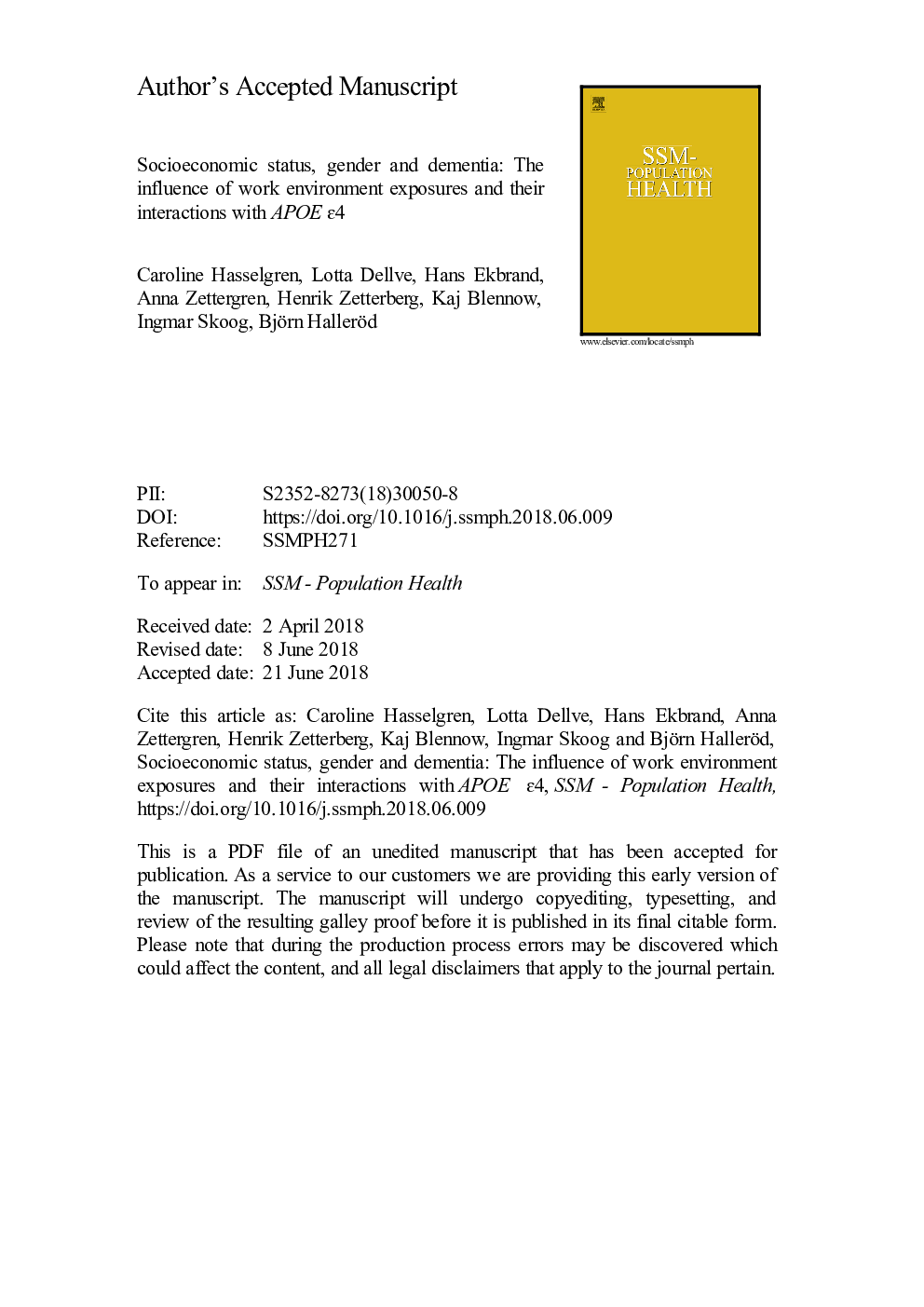| Article ID | Journal | Published Year | Pages | File Type |
|---|---|---|---|---|
| 7528000 | SSM - Population Health | 2018 | 23 Pages |
Abstract
It is a well-established fact that unfavourable social and economic conditions have a negative impact on health and longevity. Recent findings suggest that this is also true of age-related dementias. Yet most common indicators of socioeconomic status (SES) say very little about the actual mechanisms at play in disease development. The present paper explores five work exposure characteristics, all of which have a clear social gradient, that could potentially shed further light on the relationship between SES and dementia. Specifically, it investigates whether these exposures could moderate the impact of a well-known genetic risk factor: the APOE É4 allele. The empirical analyses are based on data from a Swedish population study (n = 1019). Main occupation was linked to The Job Exposure Matrix to estimate the individuals' exposure to the following work environment factors: work control, support, psychological demands, physical demands and job hazards. All analyses were conducted using binary logistic regression and focused specifically on gene-work exposure interactions. A significant main effect of work control on dementia risk was detected for males (OR = 0.68; p< 0.05), but not for females. However, control was found to significantly moderate the effect of APOE É4 in both genders, albeit in different ways. These findings do not only underscore the importance of considering interactions between social and genetic risk factors to better understanding multifactorial diseases such as dementia. They also propose that gender- and class-based inequities interact, and hence must be considered simultaneously, also in relation to this particular disease.
Related Topics
Social Sciences and Humanities
Social Sciences
Health
Authors
Caroline Hasselgren, Lotta Dellve, Hans Ekbrand, Anna Zettergren, Henrik Zetterberg, Kaj Blennow, Ingmar Skoog, Björn Halleröd,
